SUNDAY: Arriving in Baltra, my husband Johnny leaves us to make his way to the lovely apartment provided by the promoter, while John Peter and I take a small speedboat to the yacht on which we are going to play in the afternoon. It's a luxury yacht, but John says it is not as big as the sheik's yacht he played on in Dubai. Still, it seems to have everything, including a lounge for the crew below deck, and a room with its own speedboat for diving expeditions (wetsuits and all equipment provided for the guests), kitchen, bar, guest lounge, deck patio, Steinway 5 foot grand piano...you know, everything.
Apparently they're not accustomed to having live music though. I ask the "sound man" for an AKG C414 mic with a gooseneck and he shows me a POS (piece of shit) 101 and says that's all he has.
When I'd been packing for this trip, which I did with a 21" suitcase and a small bag (plus my horn), I accidentally threw in a European power adapter instead of a USB adapter. But when I went to steam my outfit on board the ship, I saw the power outlets were European! Being that the crew was all Europeans, I doubt if I would have been able to borrow an adapter, so my "packing accident" turned out to be perfect.
We had to sign a NDA for this gig. Apparently the owner of the ship is a billionaire with an internet-based business (new money...see my previous article on the difference between social classes and you will know why the crew hesitated in giving us a mere glass of wine!) and he is very private. Unlike other billionaires who like to show off their wealth (Jeff Bezos, anyone?) this guy stays well off the beaten track.
John and I play for a couple of hours, with a break in between for speeches (it's a small birthday celebration, maybe 20 guests in total) and then we load ourselves and our stuff on a speedboat taxi to get back to the island of Santa Cruz, where we are staying.
John adjusting his life vest as we make our way to the yacht.
The night is pitch black. I mean, pitch. black.
I haven't seen stars like this since 1989 in New Mexico (where, by the way, I also saw a couple UFOs). The captain has to navigate by them. When we start approaching the dock, the mate has to look for the channels in the water with a flashlight in order to avoid the rocks.
Johnny meets up with us in Puerto Ayora and we all go to Isla Grill for a little drinkie-poo before bed.
The sea lions are EVERYWHERE!
MONDAY: John Peter has decided to cancel the other gigs we had so he can spend some time with his family (he is from Santa Cruz originally, and his dad is a boat captain there). The promoter tells Johnny and I we can use the apartment all week, so we start planning our activities. We are working with the University of Azuay on a couple of projects in memory of Johnny's late father, Efraín Jara Idrovo, a Poet Laureate of Ecuador, so we needed to make some connections and meet up with some contacts while we were in Galápagos. But first: tourist stuff!
The lovely Blue Heron Villa is available to book for your own Galápagos adventure.
We are staying in an exclusive part of Santa Cruz called La Estrada, which is where the famous Angermeyer family from Germany first built their house when they arrived in Galápagos. Can you imagine building a house in the old days when hardly anyone lived in these islands? No machinery, no imported materials...the house is all hand-built, a historic monument. (It is now a high-end restaurant, where we ate at the end of our stay.)
We hail a water taxi to travel across the bay to Puerto Ayora, where all the action is. From there we visit the Darwin Research Center. Lots of walking involved. I'm wearing sandals I haven't worn in awhile and they're irritating my feet. It occurs to me to grab a couple leaves off a tree to cushion those spots. I see the perfect tree and just then Johnny says, "See that tree? It's called manzanillo. It's deadly poisonous–the berries, the bark, the leaves, everything. Don't touch it, whatever you do."
“Don’t touch the manzanillo tree, whatever you do!”
TUESDAY: Today we're going to one of the most famous beaches in the world, Tortuga Bay ("Turtle Bay"). It is fantastic; white sand, mangroves, a cove for swimming (the red flag was up on the main beach). Meanwhile, the rest of the world has its own red flag, indicating the possible start of World War III. The scare comes and goes rather quickly. I don't even look at the news anymore, just the price of Bitcoin–that tells you pretty much everything you need to know.
Tortuga Bay, Santa Cruz, Galápagos
At the dock we have a conversation with the janitor. He's the spitting image of a bum called Freddie Freeloader who used to hang out around the NYC jazz clubs back in the day. (Yes, the same Freddie Freeloader whom Miles Davis immortalized in song on the Kind of Blue album in 1959.) The janitor schools us on how he thinks the city should be maintaining the port. Johnny tells him he should run for mayor. He replies that he would, except he doesn't know how to read or write.
WEDNESDAY: Near our villa is a small beach called Playa de los Alemanes ("The Germans’ Beach") and we continue walking to Las Grietas, where there is a path along the volcanic rock that leads to a cove for snorkeling. For this walk we have to pay a guide $10; only Galápagos residents are permitted without a guide. In the 40 years since Johnny has lived here, it's gotten very commercial. The hype is that Galápagos is all about preserving the natural environment, but the reality is that it's all about tourism.
Returning to Puerto Ayora, we dine at a sushi place called Midori–only $50 for two meals with drinks! This is shockingly low, because everything in Galápagos is really expensive. Over dinner we discuss our journey for the following day: Because Johnny used to live on the island of Isabela, he really wants to go there and find his old friends and show me the island–where he used to live, the school where he taught, and all that. I had found an Air BNB for one night called Casa Soleil. We will stay one night in Isabela then return to Santa Cruz, where we have our free apartment till Sunday.
THURSDAY: Yesterday we purchased the round trip tickets ($120) for the 2-hour ferry ride to Isabela. Waiting for the ferry we make friends with an Israeli guy who's traveling solo, and we discuss the world situation with him. The boat is bumpy and I don't like it. "Next time we're flying" I say to Johnny.
Johnny in his element.
As soon as we disembark in Puerto Villamil, Johnny realizes he knows the dockmaster! Then he runs into two more people he knew from 40 years ago! One of them was his student, and this guy gives us a ride to our Air BNB. After dropping off our stuff we walk to a local ceviche place. It’s really hot; we are directly on the equator, at sea level.
One of Johnny's friends meets us there. He shows us where to rent bicycles and we go to the ocean. On the way back to town he meets us again and takes us to Johnny's old friend Roberto's house. Roberto was working (he is also a boat captain) but his wife Birmania invites us for dinner so we'll see him later.
In the little town square we run into Tina and Simon. Tina was 9 years old when Johnny last saw her. She tells us an amazing story: Her mother had abandoned her in the church when she was 4 years old. No one wanted her, so El Patroncito had adopted and raised her.
El Patroncito, another old friend of Johnny's, had been a prisoner in the famous penal colony on Isabela, and had been part of building the Muro de las Lágrimas ("Wall of Tears").
The Wall of Tears is a historical site 5 km west of Puerto Villamil on Isabela Island in the Galapagos Islands, Ecuador. It was constructed between 1945 and 1959 by prisoners in the penal colony on the island, which had been established by President José María Velasco Ibarra in 1944, using infrastructure left by the US military after World War II. The wall is about 8 m tall and is said to have been the cause of thousands of deaths during its construction. Locals call it the Wall of Tears because it is said to emanate eerie cries and have a heavy energy surrounding it." -Wikipedia
In the mid-20th century remote Isabela Island was home to a bleak penal colony that stood in stark contrast to the Galapagos' natural beauty. As punishment for their crimes, the prisoners who were sent to Isabela were forced to begin building a wall, ostensibly the first in what would eventually become their own permanent prison building. The forced laborers would have to chisel heavy, irregular pieces of volcanic rock from a quarry site a long walk away and lug the sharp stones back to the build site by hand. The wall reaches up to 65 feet and runs over 300 feet long and its construction was dangerous work in the ill-equipped conditions resulting in the deaths of a number of prisoners from both sickness and calamity. Today it seems clear that the construction of the wall was simply a form of punishment through labor, its purpose being nothing more than to cause misery. It still stands all alone on Isabela island, blocking nothing from anything. Visitors can actually walk up to the top of the wall and get an idea of how high it is and how easy it would have been to fall off with a little wooziness from the tropical sun. The penal colony on the island is long gone, but the memory of the cruelty inflicted there lives on. –Atlas Obscura
Eventually the penal colony was disbanded and the prisoners released. They went to live amongst the other residents of the island, where they assimilated into the population, which also included the former prison guards.
In those days, you could go find a piece of land and claim it for yourself, and that's exactly what El Patroncito did. When he died, he left his extensive estate to Tina, his adopted daughter. Now dig this: Tina finally found the birth mother who had abandoned her in the church, and gave half the land to her!
Johnny says that in the days before the penal colony existed, if you misbehaved the one cop in town would come to your house and “arrest” you, with invisible handcuffs, and put you in an invisible jail cell. Then when you go into town, no one will talk to you.
“Look, there’s Carlos….he’s in jail you know.”
“No! What did he do?”
“Stole a chicken from Doña María.”
Flamingos!
In the evening Johnny and Roberto have an emotional reunion after 40 years while Birmania makes a delicious dinner. They were together when Johnny first met them, and by now the family has grown: daughter, son and grandchildren, all living in the same large house that Roberto was able to build after Johnny taught him how to have his own business, all those years ago.
A happy Johnny and a proud Roberto, together again!
FRIDAY: We walk on the beach and take more photos, and I buy another T shirt. My plan to wash clothes dematerialized because it's so humid that unless you put it directly in the sun, nothing dries here. While waiting to return to Puerto Ayora in Santa Cruz on the afternoon ferry, we meet up with Johnny's old friend Ximena, and she tells us all about her Emma Darwin Foundation and gives Johnny an important contact for our projects.
Back in La Estrada, we decide to lay low and not take the water taxi into town, so we try out The Point restaurant which is located in the old Angermeyer house, just a short walk from our villa. We school the waitress on how to take care of the plants, which are in bad shape. In the sierras everyone knows how to care for plants and all the restaurants and hotels have beautiful plants. But here in Galápagos, where much of the terrain is desert-like, people are clueless.
The original Angermeyer house, with a real pelican perching for the photo.
We have a nice dinner and on the way out I hear someone calling my name. It's Jay, John Peter's brother! I had been hoping to see him but because John had cancelled the other gigs, it hadn't happened. He was having dinner with his parents, whom I had wanted to meet. Such a nice family. So the trip was enfolded in a synchronicity sandwich: first the episode with the "mistaken" power adapter, now getting to meet John and Jay’s parents.
SATURDAY: It's our last day, we leave tomorrow. In the morning we go to town and hire a taxi to take us to the highlands, where there are lava tunnels and a tortoise preserve. There are also craters, but not as big as the one on Isabela that is 11 kilometers wide. But they were still impressive, and so deep I couldn't see the bottom. I understand there is a lot of wildlife living inside the craters.
We were told this tortoise is more than 100 years old.
We hit the tunnels at a serendipitous moment free of other people. A now-extinct volcano had sent lava flows that cut through the landscape, cooling first near the surface, then the walls and floor. Over time the tunnels have been made more tourist-friendly, with actual footpaths and stone stairs. Where the roof is too low, a "walkway" has been constructed so you can crawl through on your hands and knees.
SUNDAY: All-day travel back to the mainland. The pet sitter has already taken the last bus back to Cuenca when we finally arrive home. The dogs are glad to see us. The chihuahua pees on our shoes. The cat says, "oh hey, feed me."
Now we start working on our projects, anticipating our return to Galápagos. Next time I will get to see the other main islands of San Cristobal and Floreana. Johnny says the latter is virtually the same as it was back in the old days.
That's why no one goes there.
Related articles from Temple of Artists:
Tale of 2 Gigs, and 2 Social Classes
UAPs & UFOs
The Gig With John Peter: Colleagues and Chemistry





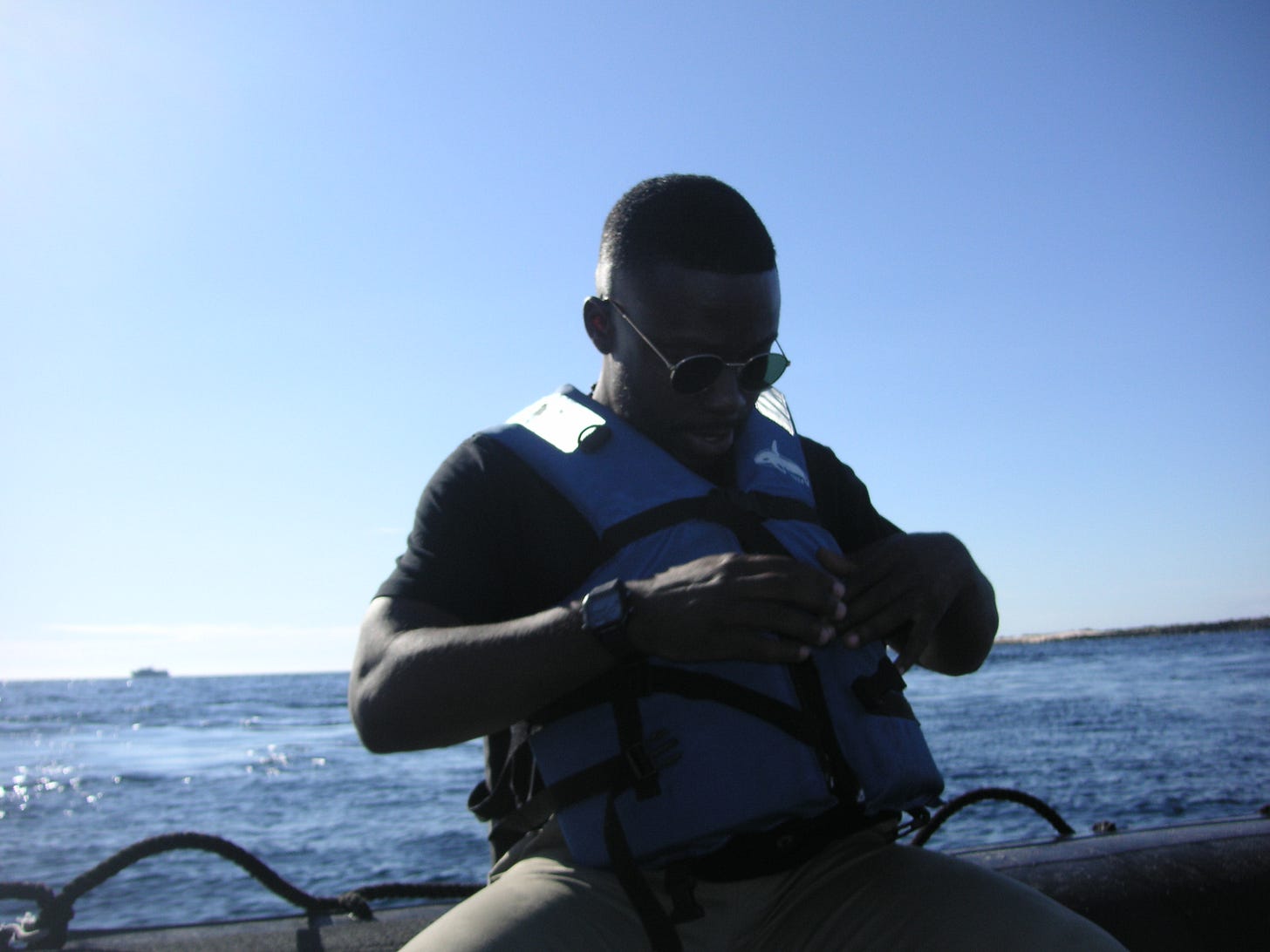
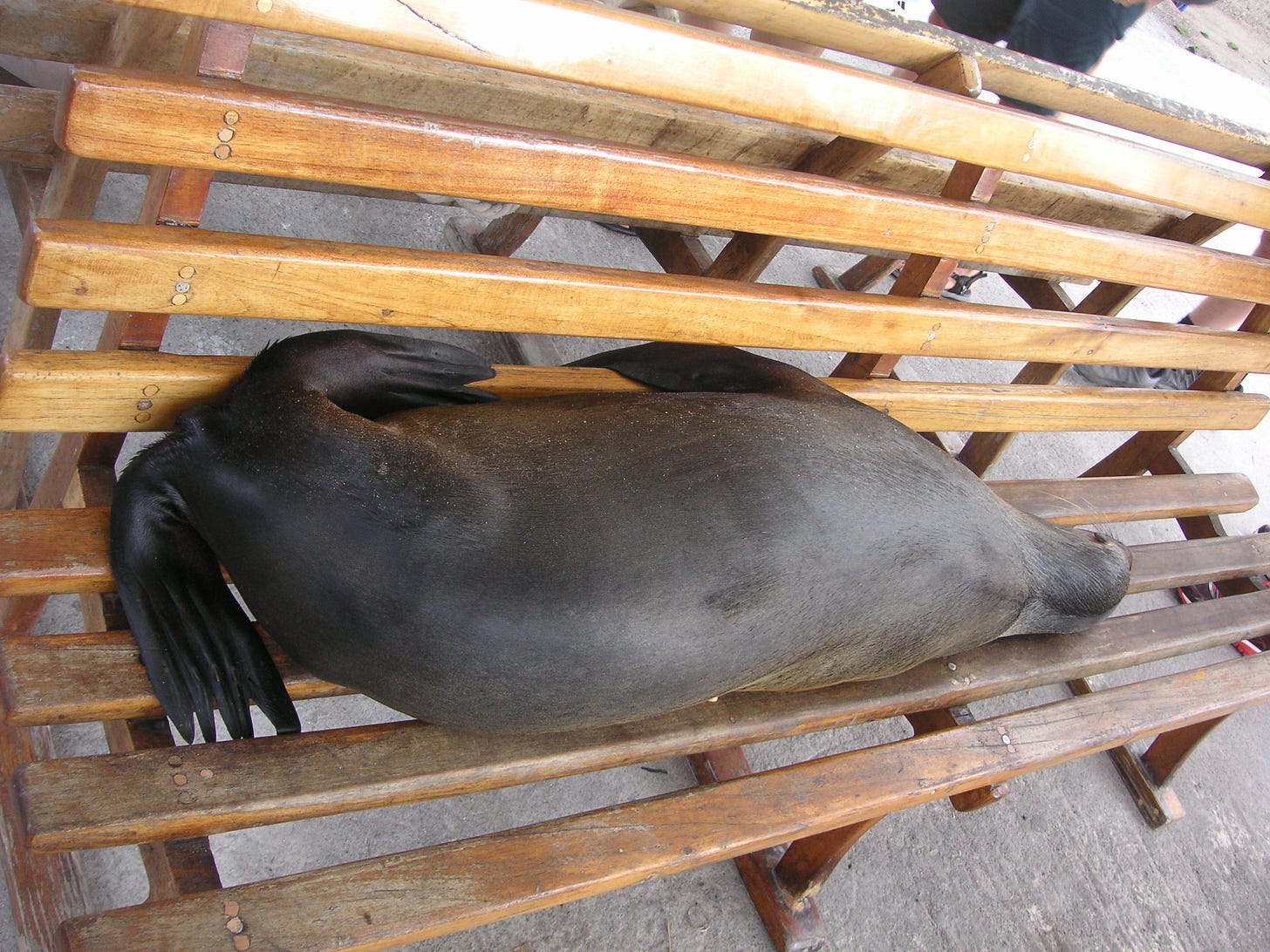


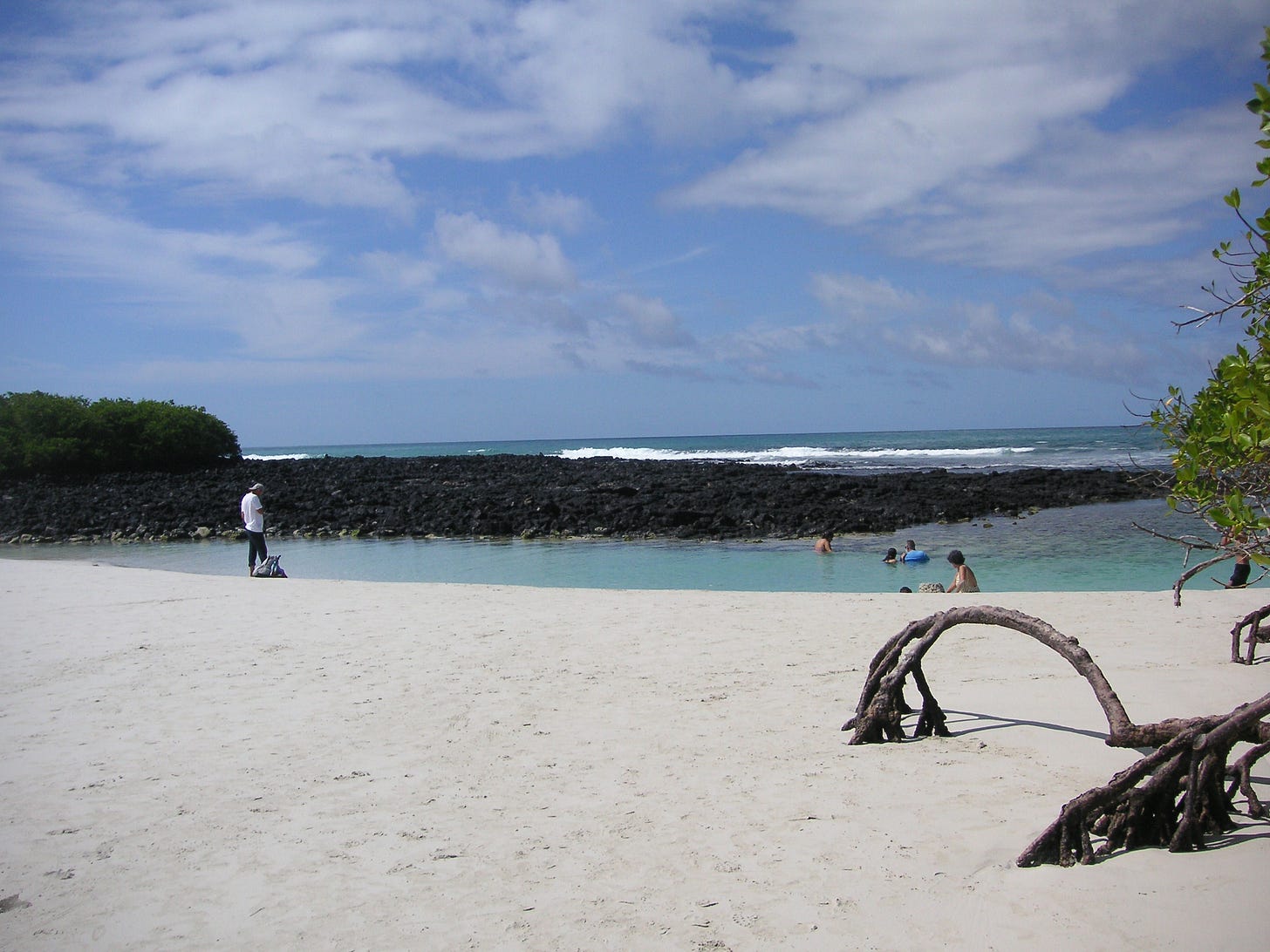
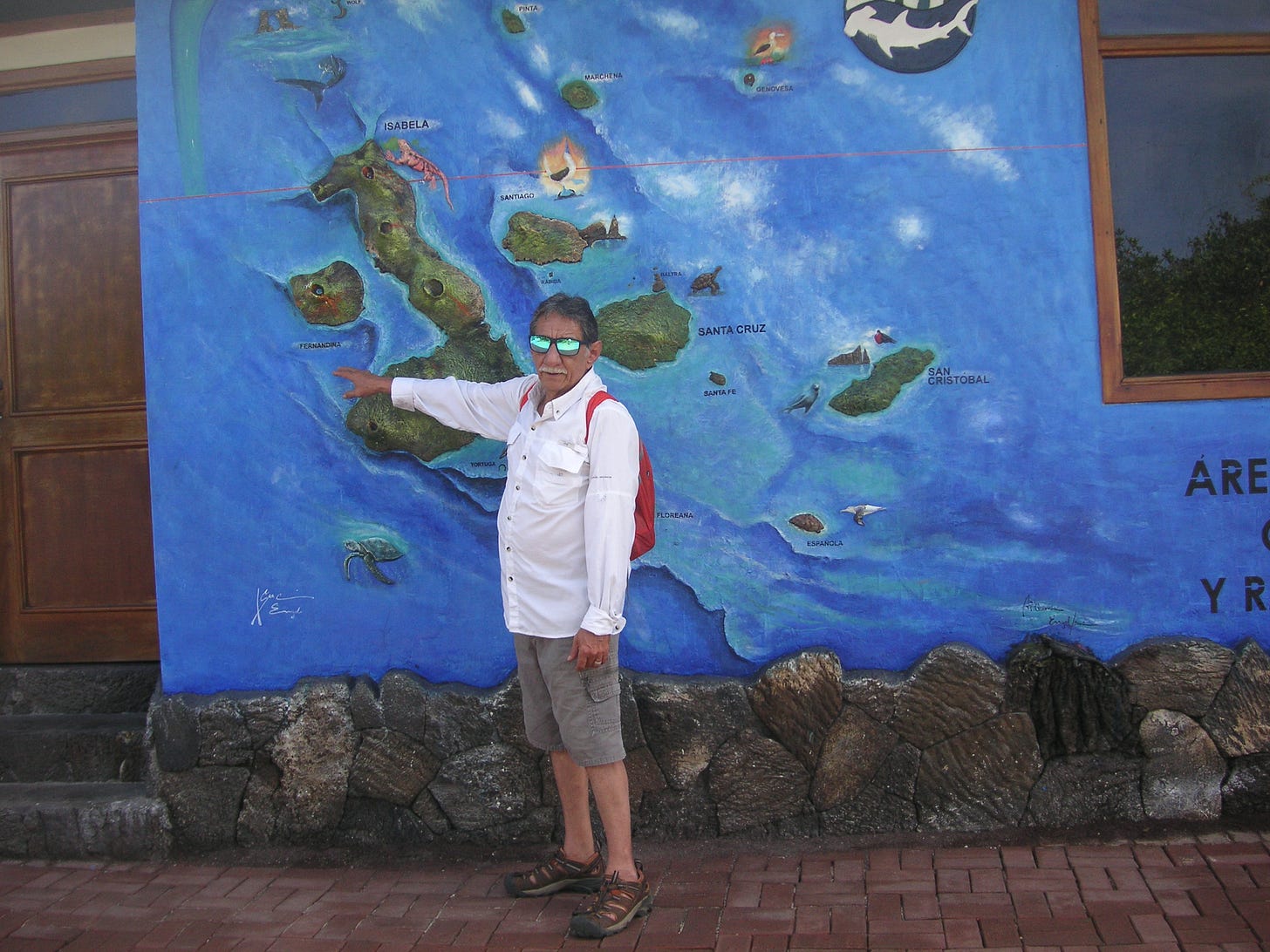
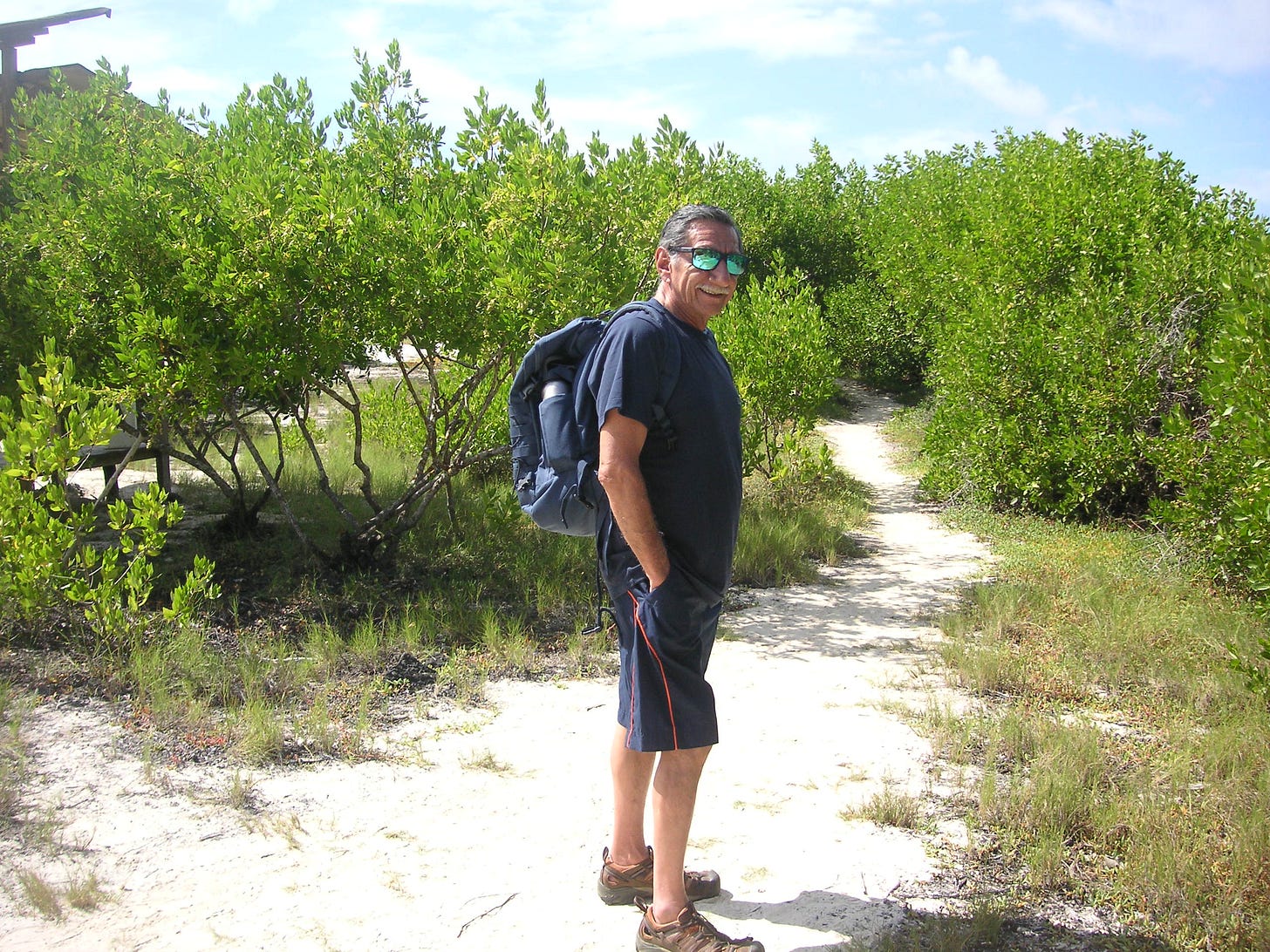


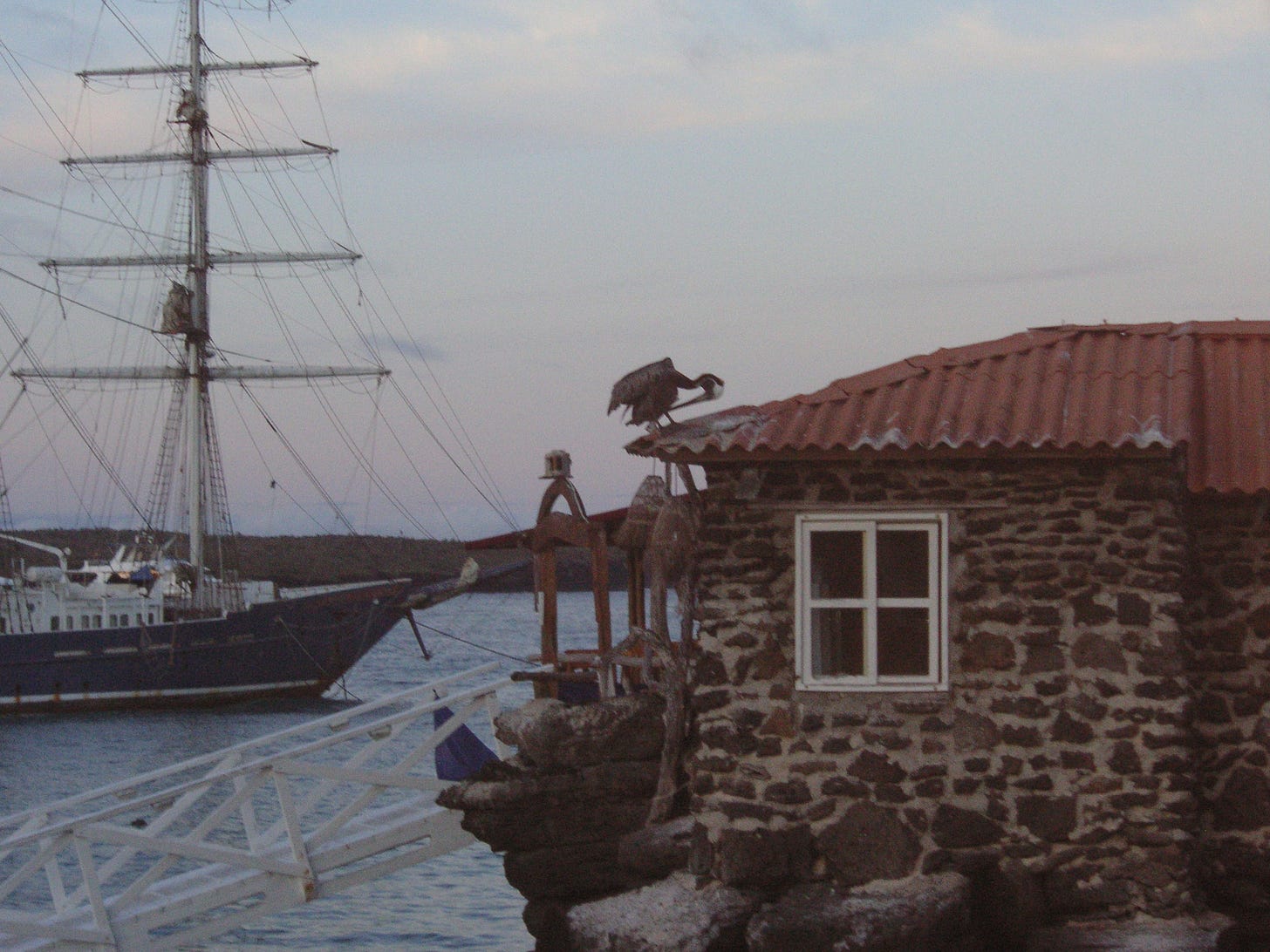
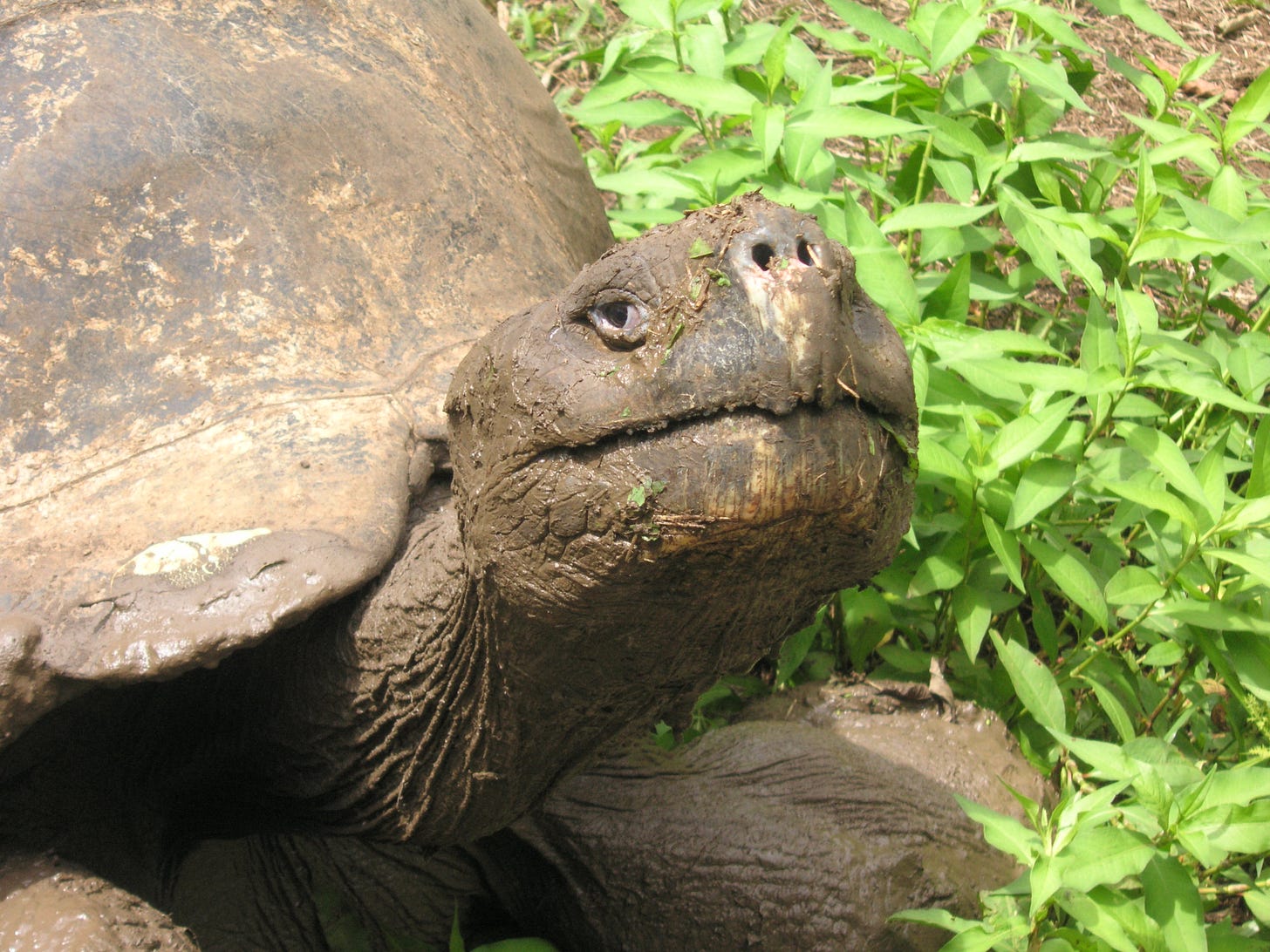
Su, what a great trip and story. It brought back lots of good, crazy memories for me. I was there (Galapagos) about thirty-two years ago; a reward bonus trip after climbing Cotopaxi and Chimborazo in my mountaineering days. My last big mountains. I'm happy for Johnny, to be able to re-connect with a time, a place, and people important to his own becoming. Johnny, write your memoirs. Your life-story rivals anyone's. Also, did you know that a direct descendent of the original Angermeyer family lives in Vilcabamba? She grew up in those original houses running wild with her untamed mad-German uncles. Has written a GREAT book about her childhood there. I will look for the book and her contact info for you. I'd not be surprised if Johnny knows her. She runs a dog rescue from her home in San Joaquin. Forgive me, my older addled brain can not recall her name. Oy!
Su! Something else we have in common! My wife is a poet! Tinabarr.com!